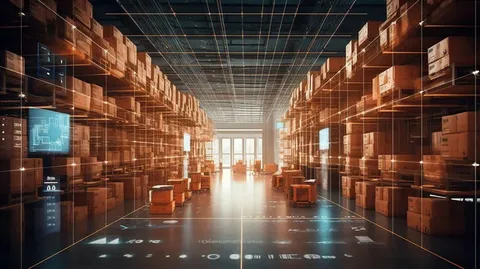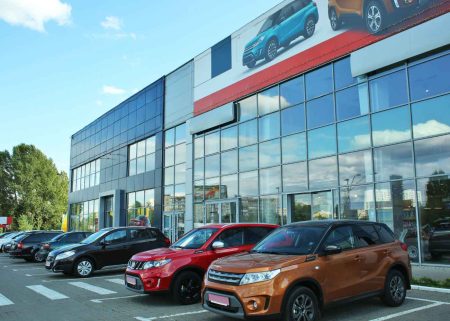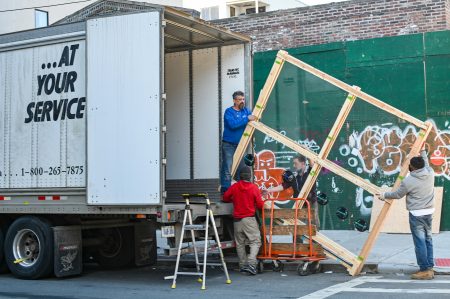A fascinating trend is reshaping retail: digitally native brands, born and raised online, are conquering the physical world. From buzzy pop-up shops in major cities to permanent storefronts on Main Street, successful online businesses are discovering the immense power of face-to-face interaction. But while the marketing and branding opportunities are exciting, the biggest hurdle is often invisible to the customer: logistics. To succeed in an omnichannel world, you need a sophisticated, unified inventory and fulfillment strategy. It all starts with centralized warehousing.
Why Go Physical? The Omnichannel Advantage
Expanding from “clicks” to “bricks” isn’t just about opening another sales channel; it’s about creating a richer, more immersive brand ecosystem. The strategic benefits are layered and powerful:
- A Tangible Brand World: Customers can finally touch, feel, and try on your products. A well-designed store is a physical manifestation of your brand’s Instagram feed, turning abstract values into a concrete experience.
- Powerful New Customer Acquisition: You reach a segment of shoppers who prefer to buy in person or who may not have discovered you through the noise of online advertising. A physical storefront is its own billboard.
- Deepened Trust and Credibility: A physical presence builds legitimacy and trust. It signals that your brand is established and here to stay, reducing purchase anxiety for new customers. It also allows you to build a community, host events, and strengthen your personal branding by allowing founders and brand leaders to connect directly with their customers.
- The Ultimate Customer Convenience: Offering services like “Buy Online, Pick-up In-Store” (BOPIS) and “Buy Online, Return In-Store” is a major competitive advantage that pure-play online retailers can’t match.
The Hidden Challenge: The Nightmare of Omnichannel Logistics
While the front-end experience for the customer should feel seamless, the back-end logistics can quickly become a nightmare if not managed properly. By adding a physical store, you are no longer just a DTC company. You now have to manage two fundamentally different types of fulfillment:
- Direct-to-Consumer (DTC): Your bread and butter. Picking and packing single, unique items for thousands of individual online orders, each with its own address.
- Business-to-Business (B2B) / Retail Replenishment: Preparing and shipping cases or pallets of your top-selling products to your own retail locations or wholesale partners on a regular schedule.
Without a unified system, this inevitably leads to “inventory blindness.” Imagine this common scenario: a customer sees a product is in stock online and drives to your store, only to be told it’s in the e-commerce warehouse across town and can’t be accessed. You’ve just created a deeply frustrating experience and likely lost a customer for good. This is the core challenge: making two separate inventory pools act as one.
The Solution: A Centralized Inventory Hub
The key to solving this logistical puzzle is to manage your entire inventory from a single, centralized hub powered by sophisticated technology. Instead of having one pile of inventory for online orders and another for your physical store, you have one unified pool of stock that can fulfill any order, from any channel, at any time.
This is where a modern fulfillment partner becomes essential. A simple storage unit can’t do this. You need a partner who understands the nuances of both B2B and DTC fulfillment and has the technology to manage it all seamlessly.
A sophisticated warehousing partner acts as the central nervous system for your entire omnichannel operation. They can:
- Receive and Process All Inventory: They can handle container shipments from your manufacturers and professionally receive, inspect, and warehouse your products.
- Utilize a Unified Inventory Pool: Through a Warehouse Management System (WMS), they use a single stock pool to fulfill individual online orders and build palletized retail replenishment shipments.
- Provide Real-Time, Synchronized Data: Their system integrates directly with both your e-commerce platform (like Shopify) and your physical store’s point-of-sale (POS) system. This means your website accurately reflects the total inventory available across your entire network, preventing overselling and disappointing customers.
- Handle Complex Value-Added Services: Need to create special product bundles for an in-store promotion? Need to manage customer returns from all channels in one place? A true fulfillment partner can handle these complex needs, ensuring brand consistency everywhere.
Expanding from clicks to bricks is one of the most powerful growth strategies available to a mature online brand. But this exciting step is doomed to fail without a solid logistical foundation. By centralizing your inventory with a capable warehousing partner, you can eliminate the complexity and ensure a seamless, delightful experience for your customers, no matter where they choose to shop.










